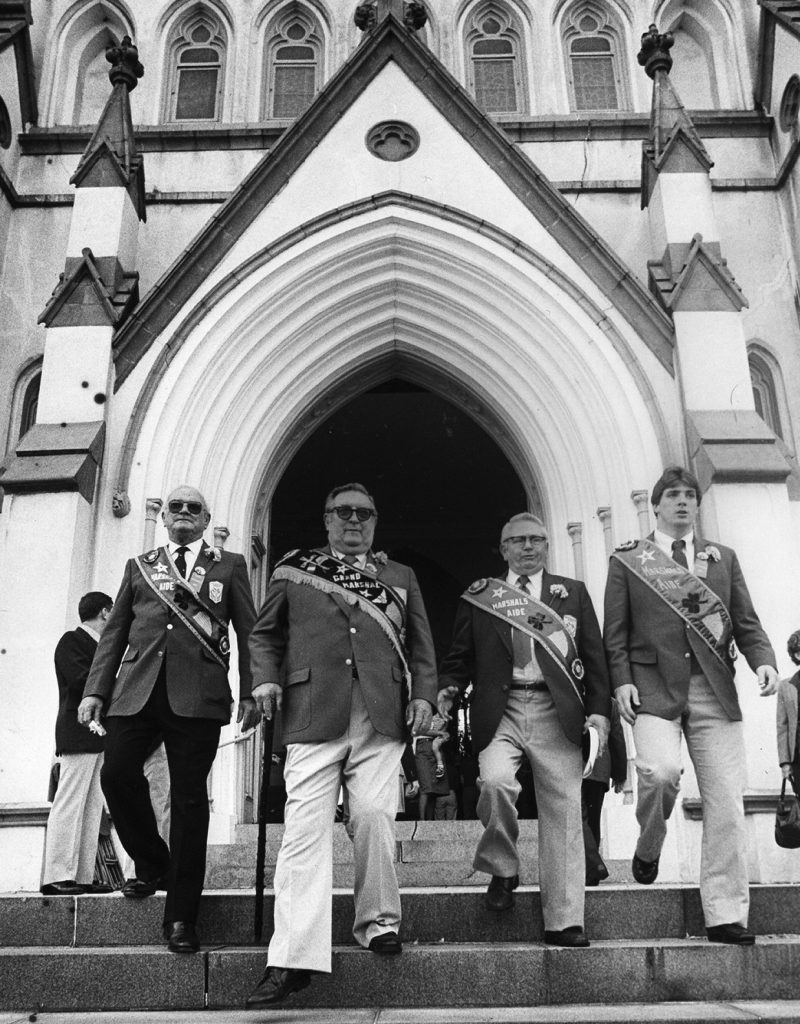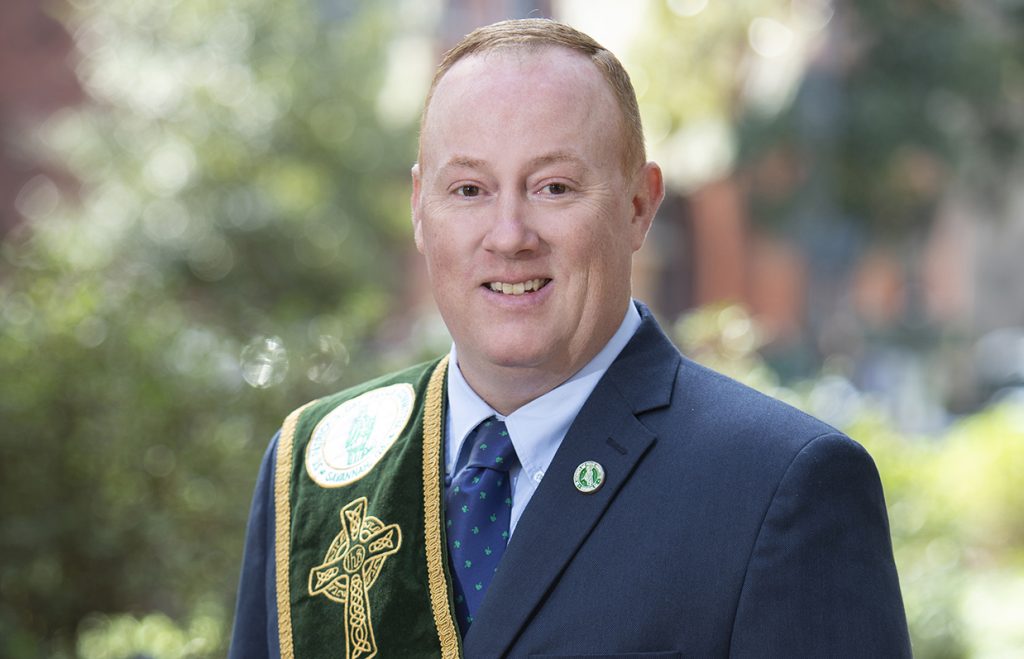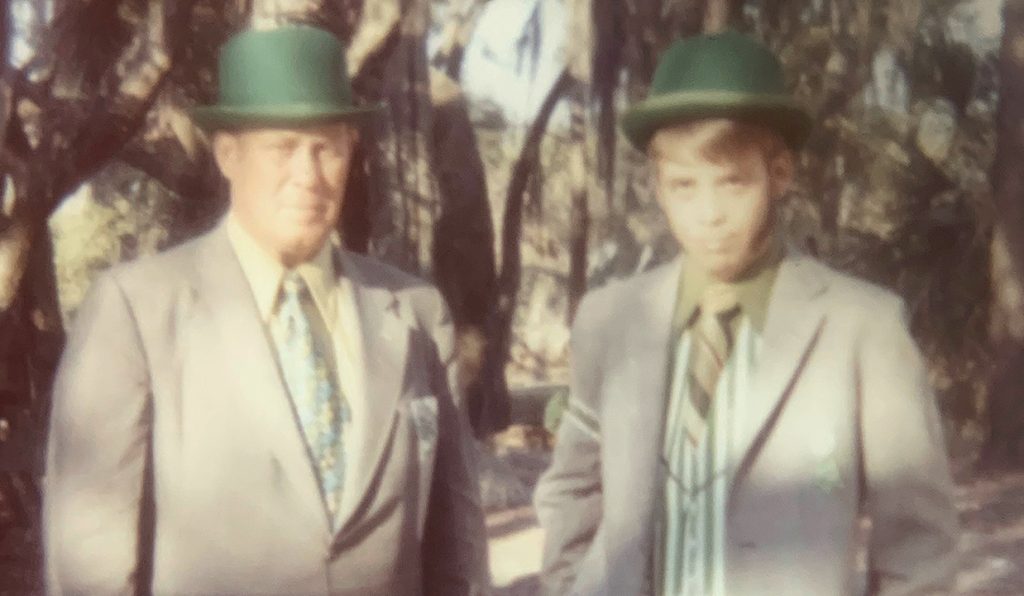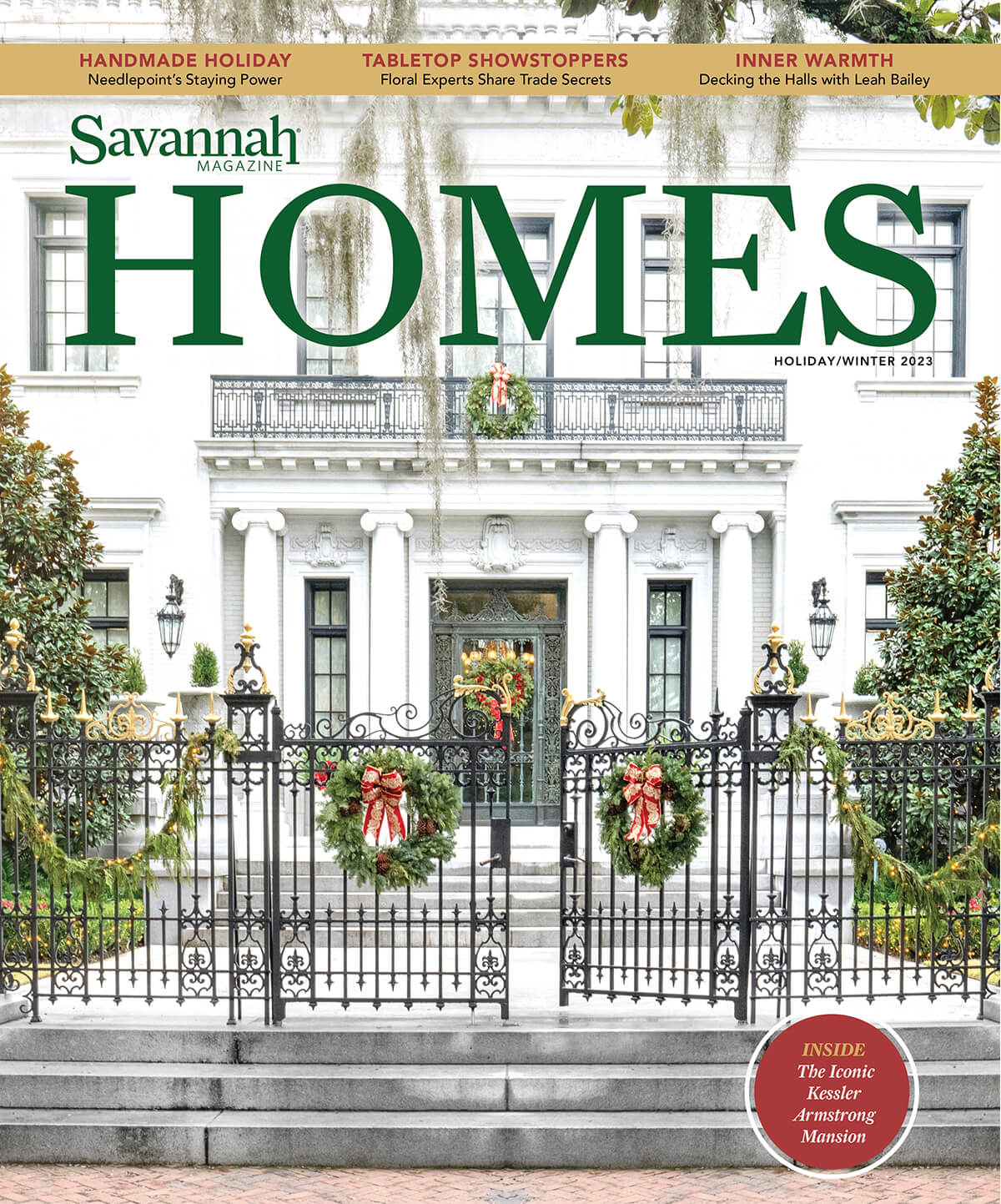SAVANNAH’S FAVORITE SEASON is upon us. It’s that time of the year when the azaleas bloom pink and the fountains turn green, ready for the city’s premier event: its renowned St. Patrick’s Day parade.
A tradition that is 199 years old, Savannah’s parade is touted as one of the largest in the country. And while popular culture may associate March 17 with revelry and green beer, to Ashley M. Norris, the parade is much more personal.
“Growing up an Irish Catholic boy in Savannah, the parade has always held a special place in my heart,” says Norris, who is serving as general chairman of this year’s 900-member parade committee. “It’s the one day of the year I see my entire family.”

Norris has been a member of the committee (an all-volunteer, nonprofit organization) for 18 years and has served on the Executive Committee for 13. According to Norris, the highest honor bestowed upon an Irishman in Savannah, however, is the title of Grand Marshal — a position elected by the entire committee on the last Sunday of February.
“My uncle, Walter M. Crawford Jr., was elected Grand Marshal for the 2011 parade,” says Norris. “It was a great honor for him, as well as my family, to hold such a title.”
Leading up to the parade, the honoree appoints aides and a chaplain and appears at several events, including the Greening of the Fountain and the Celtic Cross Mass, Procession and Ceremony.
“This is my favorite of all of our events,” says Norris of the latter. “This is a smaller march, which is very similar to the origins of what the parade is today. This is the Irish of Savannah marching to commemorate our faith and the Irish: past, present and future.”
According to Howard Keeley, the director of the Center for Irish Research and Teaching at Georgia Southern University, Savannah’s first public St. Patrick’s Day parade occurred in 1824. To commemorate the Feast of St. Patrick, the Hibernian Society of Savannah invited the first Catholic Bishop of Charleston, an Irishman named John England, to speak in Savannah.

On that historic day, Hibernian Society members marched at noon from the City Hotel at 21-23 W. Bay St. (now the site of Moon River Brewing Company) to St. John the Baptist Church (then located on the former Liberty Square, across from the Chatham County Courthouse).
After the bishop’s speech, the Hibernians marched back as they had come, then threw a banquet with 80 members and their guests. According to Keeley, among the toasts that evening was, “The oppressed sons of Erin (Ireland), may they always find open arms to receive them in Savannah.”
And they always have. When a large section of Savannah burned in the great fire of 1820, Irish workers flocked to help with the reconstruction. By the 1830s and ’40s, as Georgia rapidly expanded, Irishmen crossed the Atlantic for the work of building canals and railroads across the state. When Ireland’s Great Potato Famine struck in 1845 and an estimated eighth of Ireland’s population emigrated, mostly to America, and Savannah’s port was an easy entry point. By 1855, the roughly 1,500 Irish in Savannah had doubled — a significant number in what was still a small city.
At that original banquet, the bishop reportedly told the crowd: “[M]ay the example of Savannah be widely influential; here men who differ in religion may meet as friends and brethren; the acrimony of the bigot is not permitted to destroy the harmony of society.”

While the parade route and festivities have evolved over the years, the bishop’s sentiment endures when crowds fill Savannah’s streets and squares. In addition to the Hibernian Society, other societies that will be participating this year include the Fenian, Shenanigans, Fine Gael, Sinn Féin and Police Emerald Societies, the Friendly Sons of St. Patrick, the Daughters of Ireland and the Ladies Ancient Order of Hibernians.
Members of Irish Savannahian Allie Robinson’s family march with the Clan na Erin, or the Family of Ireland. Established in 1979, the organization’s focus is just that — honoring family. Through its Emeritus Membership process, a member with at least 25 years of active participation can pass on their membership to their son or the son of another member — maintaining the legacy of the original members’ families. Robinson herself first “marched” in the parade in her mother’s belly, and she has been on the route every year since.
“It’s a testament to where we came from, who settled here, and who made Savannah Savannah,” Robinson says.
And it’s not too early to start preparing for next year’s bicentennial. “We have created a separate committee to [help] plan something special for our upcoming 200th anniversary,” says Norris.





